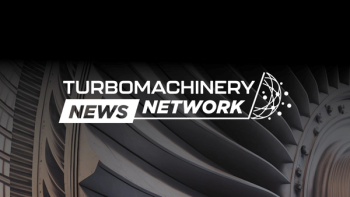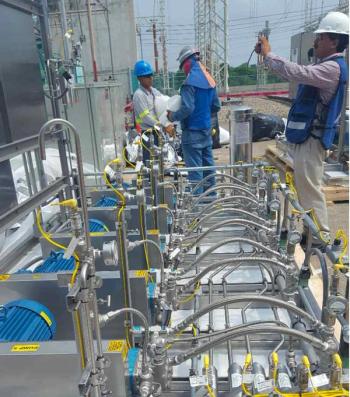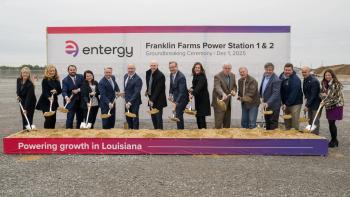
Brief: 20% Hydrogen Blending Study
Mitsubishi M501G gas turbine tested for hydrogen-mix feasibility
Previously, Turbomachinery International Magazine
Hydrogen blending is a potential route to low or zero carbon power systems. The specifications of the M501G tested are 256 MW at baseload featuring a DLN combustion system. It was chosen due to the fact it’s a commonly used modernized gas turbine system not hampered by water-injection to reduce emissions. Infrastructure restrains negated the possibility of long-term operation of the GT in hydrogen-blending mode. General capability, NOx emissions, CO emissions and emissions-compliant load range, CO2 emissions, gas turbine control, and durability were key parameters tested.
Research focusing on hydrogen mixtures in gas turbine combustion is a hot topic in turbomachinery. Advancements have led to new technologies which require vigorous, incremental testing to prove feasibility. NG is the most commonly used fuel due to the energy that can be extracted. Blending of hydrogen into the NG stream is one way to see carbon reduction. EPRI expects further interest in hydrogen blending research following the results of this study.
Combustion Impact
OEMs use dry-low emissions (DLE) and low-NOx (DLN) systems to reduce pollutants. It reduces the fuel-to-air ratio, which consequently results in lower combustion temperatures and NOx emissions. Flame speed of H2 is much faster than NG. As a result, combustion system design needs to account for the flame speed differently, including control of fuel-to-air ratios in the combustor. Analysis and testing are required to determine capabilities of new systems.
Heating value or energy density in a chunk of H2 is less than one third of NG, which impacts fuel circuit sizing. Valves, piping, metering devices, and control systems are also impacted by the difference. Fuel flows change depending on the energy content. More H2 influences GT performance by exchanging CO2 emissions for H2O emissions. Levels of oxygen, water, and other constituents increase in the exhaust as CO2 decreases.
This article is based on a report by EPRI. Full access can be found at: https://www.changeinpower.com/mcdonough
Newsletter
Power your knowledge with the latest in turbine technology, engineering advances, and energy solutions—subscribe to Turbomachinery International today.





